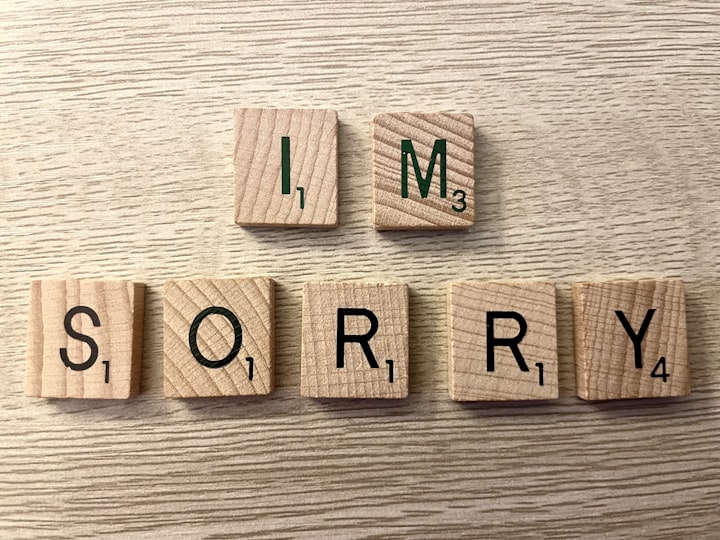Apology Magic: The Scientific Art of Making Amends
Science's Guide to Saying Sorry Right

In the grand theater of human interactions, the art of apologies has often been marred by a parade of pitiful attempts – from the artfully crafted non-apologies to the flimsy promises of corporate entities. Yet, amidst this sea of sorry spectacles, researchers have unearthed the elusive ingredients that elevate an apology from insipid to impactful. Let us embark on a journey through the delicate dance of making amends, exploring the intricacies of a well-crafted apology.
Picture this: You stroll into your new office, visions of free ice cream sandwiches dancing in your mind, only to discover a chilling reality. When helping your colleague Terence set up a birthday celebration, you find that half the ice cream intended for the festivities has mysteriously vanished. An embarrassing accident, to be sure, but the right thing to do is clear – it's time to muster the courage for an apology. In the realm of making amends, understanding and embracing responsibility for one's actions stand tall as the "centerpiece of an apology," as coined by researchers.
The vulnerability that accompanies taking responsibility adds a layer of cost to apologies, making them more than just words – they become meaningful gestures. While the temptation to defend an action as accidental may be strong, a good apology transcends the need for personal comfort. It delves into the realm of seeking to understand the perspective of the wronged party and endeavors to repair the frayed threads of the relationship. Thus, clarifying intentions non-defensively becomes a crucial component, reminding us that the essence of a sincere apology lies in acknowledging the impact on the other person rather than seeking absolution for oneself.
But what if the transgression was not born out of accident but rather a deliberate choice? Consider a scenario where you promised your friend Marie that you would attend her championship football match. Yet, a golden opportunity arises – an extra ticket for your favorite musician's farewell tour. The dilemma is real, and the allure of the once-in-a-lifetime chance proves irresistible. You decide to skip the football match, assuming Marie, with her legion of fans, won't mind. However, when Marie expresses her hurt the next day, a different kind of apology is required.
In situations where regret coexists with uncertainty about the rightness of one's choices, delving beyond a lackluster non-apology becomes imperative. Rather than fixating on justifying actions, the focus should shift to understanding the other person's perspective. Engaging in a conversation with Marie to explore how your actions made her feel can illuminate the nuances of the offense. In this case, Marie might reveal her disappointment at your broken promise and reliance on your support. Such clarity becomes the foundation for a meaningful apology, wherein you acknowledge the wrongdoing and express genuine remorse for not being there for her.
Taking responsibility is pivotal, but the narrative doesn't end there. The art of the apology extends to the crucial act of offering repair. Researchers label this step as the "offer of repair," recognizing it as one of the most critical components of a genuine apology. While the replacement of consumed ice cream is a straightforward gesture, less tangible transgressions demand symbolic acts. This might involve expressing love and respect or, in the case of a broken promise, making a verbal commitment not to repeat the mistake. However, the true test lies in the commitment's manifestation in tangible changes – promising to do better only holds weight when followed by actual improvement.
The journey through the anatomy of a good apology involves weaving together these elements – taking the victim's perspective, accepting responsibility, and making concrete offers of repair. Yet, let us not forget the essence of apologies – they are not magic spells for instant forgiveness and reconciliation. Instead, they are the opening notes of a symphony, signaling the initiation of a journey toward remorse, accountability, and, ultimately, reconciliation. In the intricate tapestry of human relationships, the best apologies are the ones that pave the way for healing, acknowledging that the road to reconciliation is a nuanced and ongoing process.
About the Creator
Tallal Jafri
Dive into a universe crafted by Tallal, Uncover captivating narratives that transcend boundaries, beckoning you to a symphony of emotions and adventures. Explore the extraordinary.






Comments
There are no comments for this story
Be the first to respond and start the conversation.